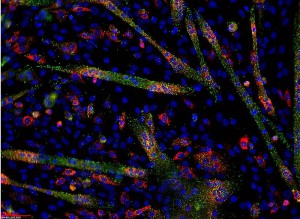
Some of us scientists who have been around for a while still think about RNA molecules falling into three categories: messenger RNA (mRNA), ribosomal RNA (rRNA) and transfer RNA (tRNA). However, I have revised my outdated RNA classification scheme as scientists discover exciting new classes of RNAs that do some fairly amazing things. For example, in the early 1980s, Thomas Cech discovered ribozymes, RNAs that have catalytic functions (1), and in the early 1990s, researchers began to take interest in short noncoding RNAs that act as a genetic regulators, the first of which was discovered in C. elegans (2). RNA is no longer simply a biological middleman between DNA and protein. These ephemeral nucleic acid molecules play a much bigger role of cellular physiology and gene regulation than we had previously ascribed to RNA.
Continue reading “How MicroRNAs Have a Big Effect on Genetic Regulation”